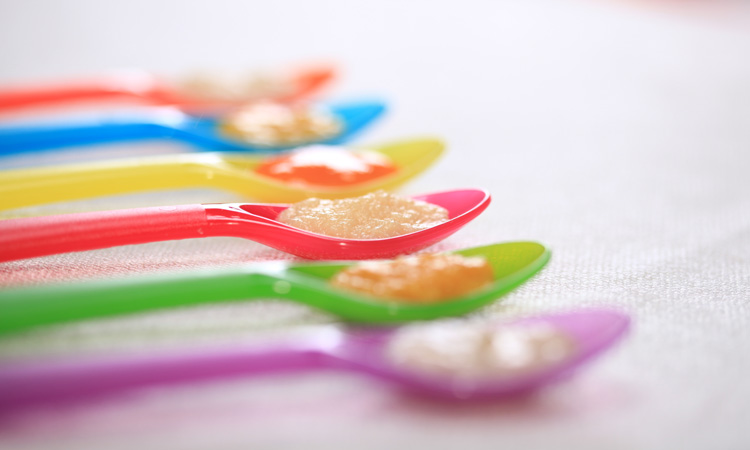Researchers compare nutritional value of infant and toddler foods
Posted: 3 December 2019 | Sam Mehmet (New Food) | No comments yet
Researchers from the University of Colorado Anschutz Medical Campus reviewed 548 infant and toddler products for their nutritional content and the age of children targeted to consume the product, and found that those in pouches had lower nutritional value.


Infant and toddler foods sold in pouches have lower nutritional value than foods sold in jars and other packaging, according to a new study led by researchers from the University of Colorado Anschutz Medical Campus.
“The high level of sugars in some pouches is potentially concerning because pouches are coming to dominate the market for infant and toddler foods,” said Kameron Moding, PhD, assistant professor of Human Development and Family Studies at Purdue University. “While pouch products are popular and convenient, the nutritional profiles differ from products sold in other packages, particularly with respect to sugars coming from fruits.”
The researchers evaluated the contents of 548 products. Of those, products in pouches totalled 274, nearly twice as many as sold in jars or other packaging, such as trays, that were made by companies based in the US. These products were reviewed for their ingredients and evaluated for their nutritional content and the age of children targeted to consume the product.
One of the key findings was said to be that pouches more commonly had blends of fruits and vegetables than other packaging types. Pouches also were less likely to contain single vegetable products. Previous studies have reportedly indicated that incorporating dark green vegetables into the diets of infants and toddlers is limited, perhaps because of a lack of commercially prepared single-vegetable products.
“Since early experiences with flavours and textures of foods may provide the foundation for later food acceptance, it is important to expose infants to a wide variety of flavours, textures, and nutrient-dense foods” said Moding.
Between one-third and one-half of infants in the US are said to consume at least some commercially prepared infant and toddler foods, with infants between six months and eight months of age being most likely to consume these products.
“We need to conduct more studies to understand whether the sugar contents of these pouch products reinforce infants’ innate preference for sweetness and influence the trajectory of the transition to family foods,” Moding commented. “We do know that infant and toddler foods that contain fruit purees and juice concentrates may create ‘health halos’ that lead caregivers to believe such blends are more healthful than they truly are, especially when they are high in sugars, but low in fibre.”
Related topics
Health & Nutrition, Ingredients, Research & development, The consumer









